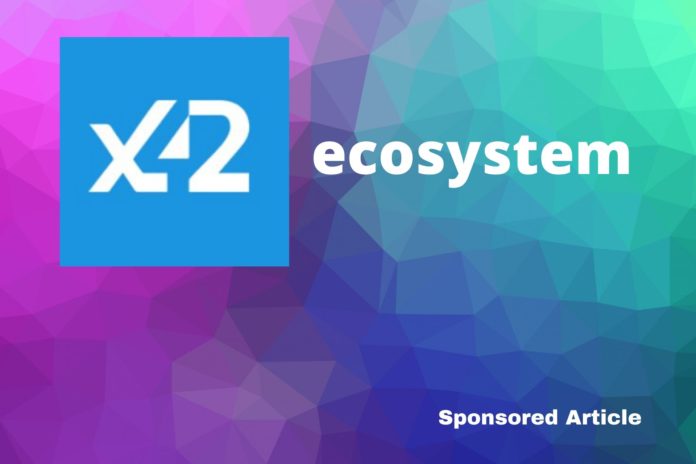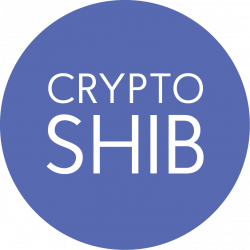
In the past few years, technology has certainly revolutionized the way new applications are built and brought to the online marketplace. However, there are still some major hindrances stopping their growth and progress.
With small developers, many barriers keep them out of the market, which keeps them out of the publishing process. Besides the publishing cost, some of the hosting applications also demand high processing power.
Thanks to the disruption by the blockchain technology, the entire industry has been democratized. x42 protocol leverages the power of blockchain and allows anyone to build their own decentralized applications (DApps) in an easy and seamless manner.
x42 is a “fealess blockchain” platform that would allow developers to launch their projects at-near zero-cost and without transaction fees.
The x42 platform unlocks a huge potential for developers, allowing them to build DApps across different industry applications like search engines, smart grids, maps, and smart retail. This protocol can also run games, coordinate large scale operations and even has the potential to control blockchain-enabled smart vehicles.
Understanding the x42 Blockchain Protocol, and Its Architecture
The x42 is a decentralised blockchain platform, developed using Stratis and the blockcore technology. The platform has been designed and built as a multi-chain solution for DApps and is flexible enough to be used from the smallest of the developers to the big organisations.
The platform aims to provide infinite freedom and a conducive environment for developers to post their DApp projects on their blockchain and host it by other node owners.
The main idea behind the x42 project is to offer developers a scalable solution, wherein they can develop their applications and games with infinite possibilities, a minimum initial investment with zero transaction fee.
The protocol also allows the developer to create side blockchain for launching their projects. The great thing about side blockchain is that it allows a great deal of customization. The side blockchain basically helps the developer to fully test and experiment before making their projects live.
The x42 blockchain protocol has its own native Proof-of-Stake cryptocurrency called the x42 coin. The protocol consists of the main blockchain that hosts all the x42 coins along with three types of nodes.
The main blockchain is supposed to have a maximum total supply of 42 million ‘x42 coins’ mined by the year 2042. The x42 protocol has a layered architecture that uses Microsoft, .NET, C#, and the Bitcoin library. The two main levels of the x42 architecture are:
- xCore – This is responsible for interacting with the infrastructure and the interface layers in addition to the node policy layers. An x42 xCore full node handles all the APIs and user interfaces.
- NBitcoin – This is responsible for handling messages between nodes in the Network Layer. It also bridges the gap between various Consensus Layer functions.
Key Features of the x42 Protocol
The x42 Protocol comes with several benefits like low entry barrier for publishing new applications, no transaction fees, a valid Proof-of-Stake (PoS) consensus mechanism, and much more. Let us look at each of the key features one-by-one.
- Zero Fees: The x42 protocol is developed with the idea of making the blockchain accessible to anyone. Hence, the main blockchain has absolute zero transaction fees.
All blocks in the network use the Proof-of-Stake (PoS) validation method to allow new transactions. Thus, projects that require processing thousands of transactions every second can run on the side blockchain, without worrying about the transaction cost hurdles.
- Infinite Scalability: The side blockchains in the x42 protocol will provide great scaling facilities to projects. This provides massive flexibility to projects of all sizes and needs.
The xServer owners will be hosting and validating all the side blockchain transactions. All these transactions will be processed using similar security protocols of the main blockchain network. Hence, one need not worry about the security of the individual side blockchain.
- Higher Transaction Speed: Transaction on the x42 blockchain platform happens almost instantly under 60 seconds. Also, the main x42 blockchain supports around 70 transactions per second. This is nearly 10 times the transactions supported by the Bitcoin blockchain network. Additionally, the good thing is the x42 side blockchains can be edited to hold as many transactions-per-second (TPS) as the developers want.
- Minimum Initial Investment: As said earlier, the x42 protocol removes the entry barrier of high app publishing costs. Even the smallest of the developers can publish their decentralised applications (DApps) with a minimum initial investment.
- Reputation System: To give a fair chance of growth to all the talented developers, the x42 team has created a unique reputation system. The users of the x42 protocol are given voting rights for projects hosted through smart contracts.
By visiting the ‘store’ users can download, run and host a variety of smart contracts and applications posted on the network. Users can also add their personal projects to the same store and pay the xServer owners for hosting them. Similarly, these users can get paid from other users who are using their applications.
The entire store runs on a reputation system graded from 1 star (the worst) to 5 stars (the best). Besides rating the applications, one can also rate users within the communities that are using x42 blockchain’s governance system.
- Privacy: The x42 protocol also makes use of a privacy technology that makes transactions private and untraceable. Although the purpose of blockchain is to maintain absolute transparency, many big organisations demand security to safeguard their user data and information.
Note that the private transactions don’t happen on the x42 main blockchain. They can take place only over the side blockchain.
Understanding xCore, xServer, and Wallets
- xCore – An xCore node is basically a device with software that has the entire x42 blockchain saved and connects the main blockchain to the side blockchains. This node seeds the main and side blockchain to all users and also has all the functionalities of a client node. Client node is any client running a wallet connected to the x42 main blockchain network.
As explained in the white-paper, “The xCore can stake coins on the main blockchain, it can also run decentralised applications hosted on xServers all across the network after having it installed on the local machine”.
- xServer – The x42 blockchain supports several different types of servers. xServer is a special sort of wallet that runs on dedicated hardware facilitates decentralisation of applications (DApps), processing and data storage.
xServers are also tasked with other activities on the network like propagating smart contracts and signing transactions. It also allows the server owner (the Gatekeeper) to get paid for hosting diverse applications.
Besides, xServers can choose to host the projects launched on any of the non-private side blockchains. Projects that share a considerable part of their revenues with the xServer owners are likely to get hosted quickly and maintained by the same servers for a longer period of time.
Before we understand xServer wallets, let’s brief about the Hot Wallet and Cold Wallets.
A hot wallet is an online wallet always connected to the internet. This is an instant point-of-contact for receiving and sending payments. The hot wallets receive the staking rewards along with payouts from DApps, side blockchain, smart contracts, and private transactions.
A cold wallet is an offline wallet and more secure from the hot wallet as it is less susceptible to online attacks. This wallet holds the collateral for the server. All the server rewards are paid out to the cold storage wallet.
Coming to the xServer wallets, these are basically software holding information for both hot and cold storage wallets. The xServer wallets can run on almost any operating system. They can also host and launch decentralised applications (DApps) and generate passive income by DApp hosting.
Conclusion
The x42 blockchain is a great option for developers irrespective of the size of your project. This protocol is suitable for individual as well as enterprise-grade decentralised applications.
The protocol provides a one-stop solution and complete ecosystem for developing, hosting, publishing, and maintaining your application software. Besides, it addresses the major concerns of scalability and privacy for its users.
The x42 protocol can be accessed by developers all across the globe.
Please follow and like us:
Related

cryptoshib.com is author of this content, TheBitcoinNews.com is is not responsible for the content of external sites.
Our Social Networks: Facebook Instagram Pinterest Reddit Telegram Twitter Youtube










